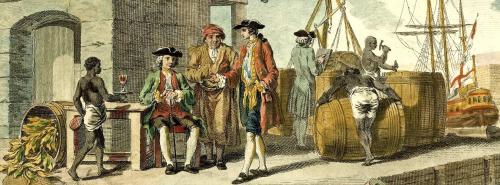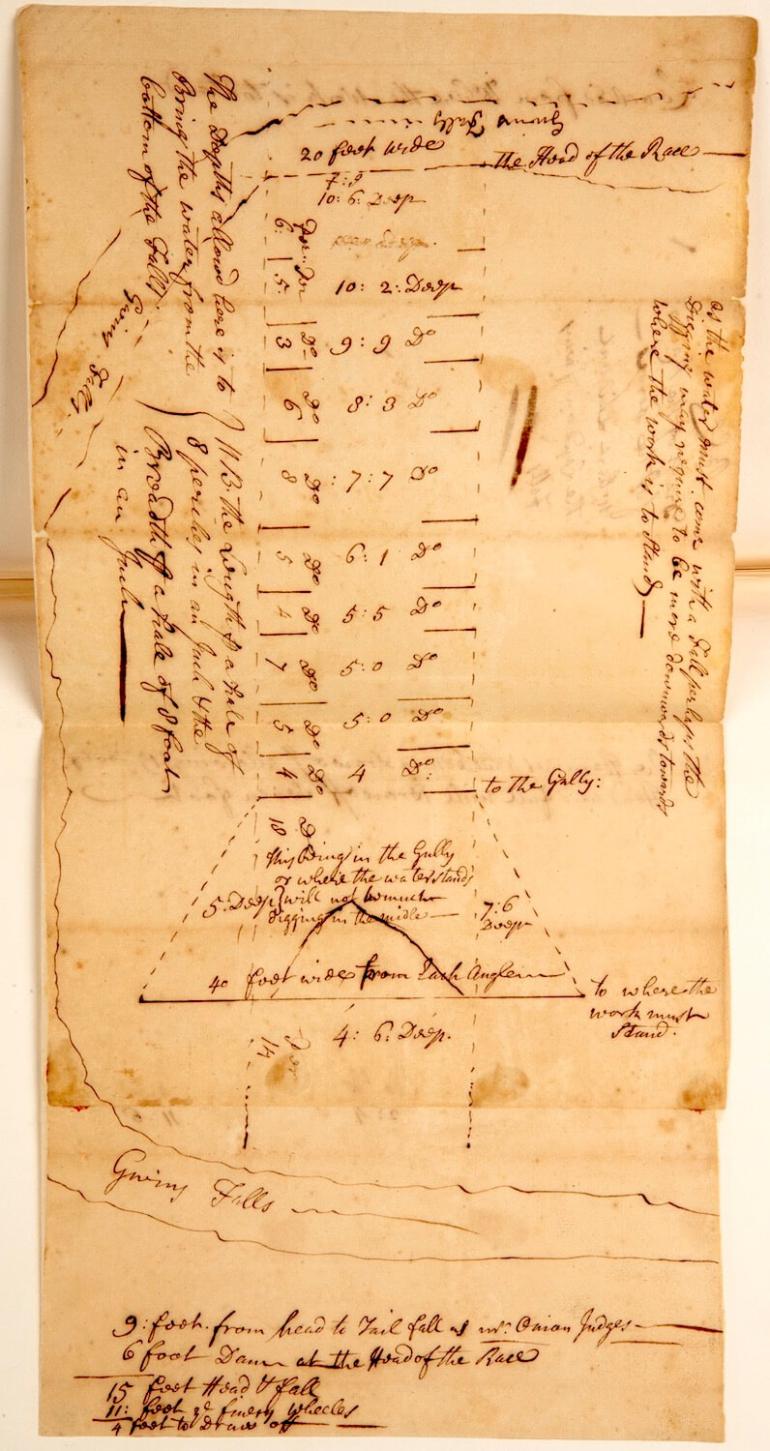There are no portraits of Dr. Charles Carroll. However, this map cartouche approximates his life as a Mid-Atlantic tobacco planter sitting outside his warehouse, while enslaved workers prepare hogsheads of tobacco for shipment, by Francis Hayman, 1751. Courtesy of the Library of Virginia.

Dr. Charles Carroll, Chyrugeon (1691-1755)
Born in Ireland, he attended medical school then immigrated to Maryland about 1715. His Catholic family lost their lands fighting against the Protestant English King, William III. Dr. Carroll settled in Annapolis, built a thriving medical practice, and began investing his profits in various business ventures. He practiced as a chyrugeon or surgeon.
In 1722, he married Dorothy Blake from a prominent family on the Eastern Shore. They had three children who survived to adulthood, Charles, Mary Clare, and John Henry. A son, Philomon, died at age 2. After Dorothy passed away in 1734, he married Anne Plater. Sometime around 1738, Dr. Carroll renounced his Catholicism and became a Protestant, very likely so that he could hold elective office or obtain land grants in Ireland. Although Maryland had been founded as a refuge for Catholics, they were discriminated against as the English throne vacillated between the two religions. As a Protestant, Dr. Carroll was able to serve in the Lower House of the Assembly as the delegate from Anne Arundel County.
An early entrepreneur, Dr. Carroll diversified away from tobacco planting by investing in land, slave holding, moneylending, grist mills, shipyards, warehouses, and wharves. In 1731, he founded the Baltimore Iron Works with four partners. Dr. Carroll acted as the first manager, educating himself by writing to and visiting other ironmasters.
Dr. Carroll died in 1755, leaving his surviving son, Charles Carroll, Barrister, one of the wealthiest Marylanders at that time.
Dorothy Blake Carroll (1702 - 1734 )
She was born in Talbot County, the daughter of Charles Blake and Henrietta Maria Lloyd. She married Dr. Charles Carroll, an Irish immigrant, in 1722 at the age of 21. They had four children, three of whom survived to adulthood. She died at age 31 in Annapolis.


